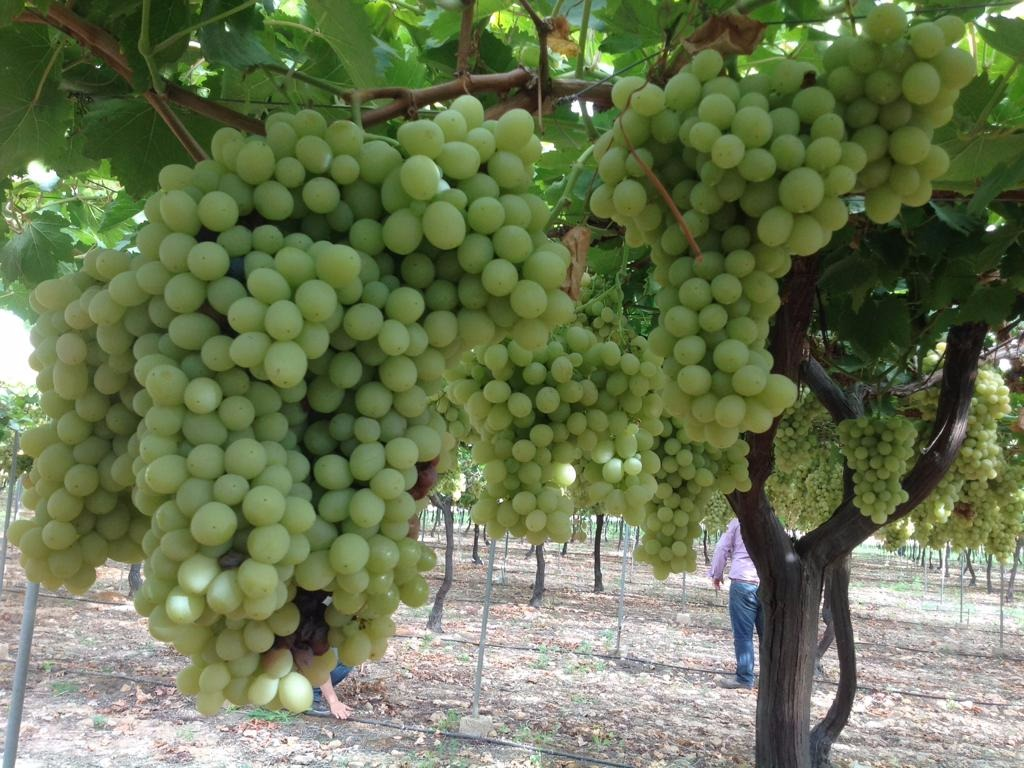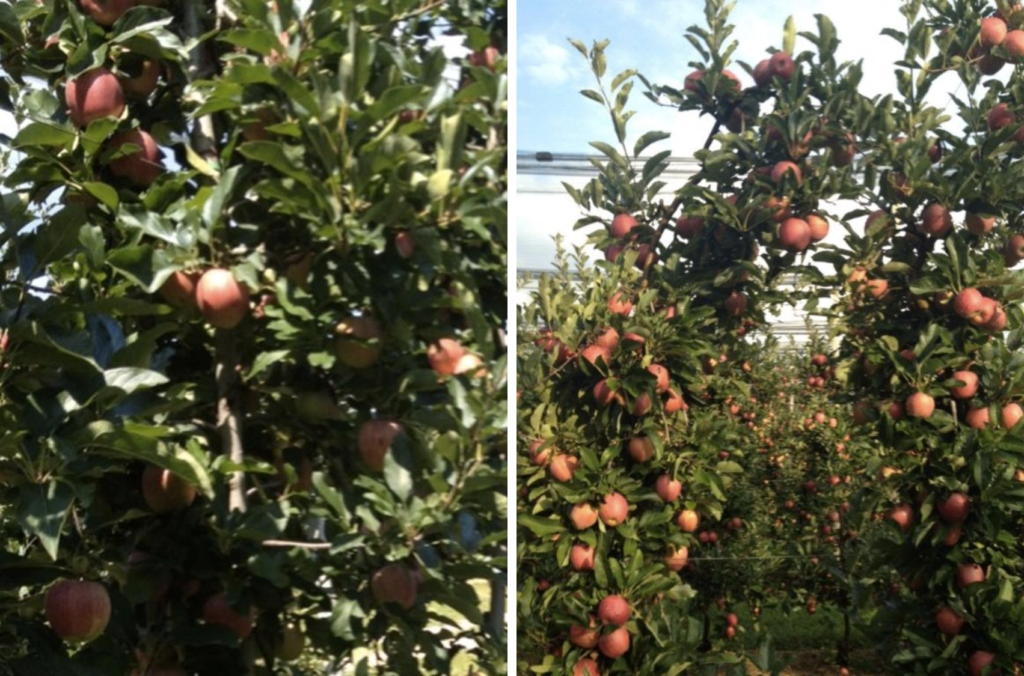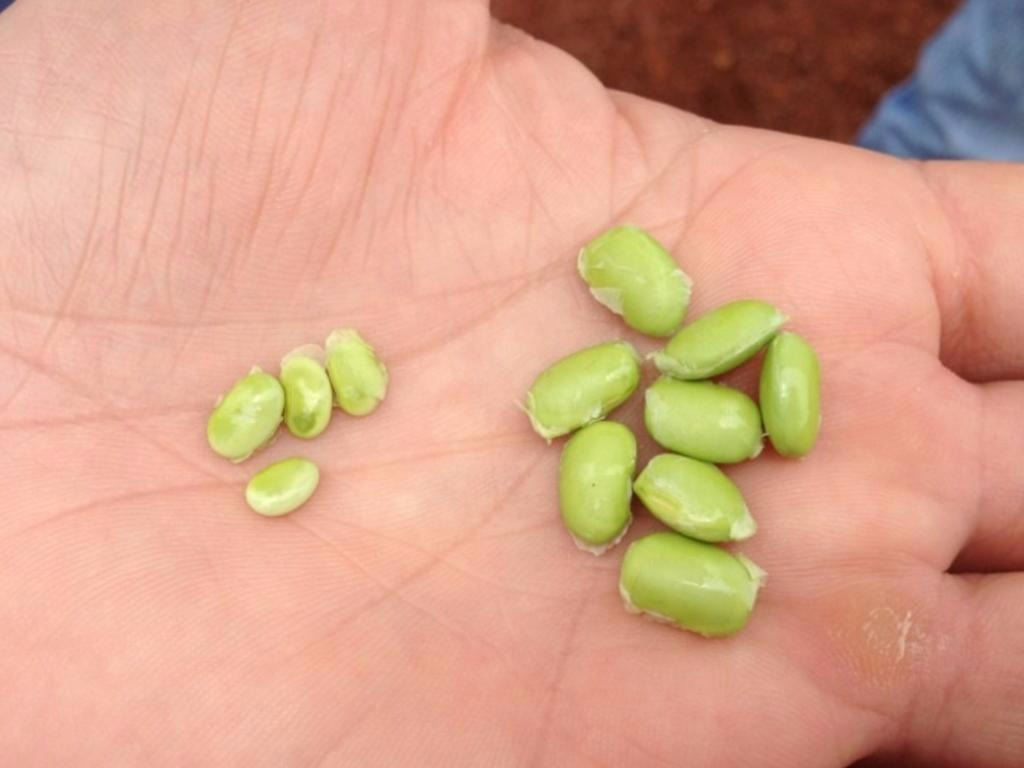Life from Rock: EcoStone Changing the Landscape of Farming
Guido A. López Cárdenas with a crop of table grapes in Spain grown with EcoStone.
EcoStone is a mineral fertilizer that not only meets the strictest criteria of organic agriculture, but also promises to significantly boost crop productivity and nutrient density to feed a growing population’s growing appetite.
With 92 natural elements that return key nutrients to the soil, EcoStone composition rapidly dissolves in water for fast soil enrichment. Further, the rock dust fertilizer contains a magnetic field, which helps with small pest control. By contrast, more conventional industrial methods of crop intervention use chemical fertilizers that contaminate the soil and generate pathogenic biology. EcoStone removes that threat.
Paraguay’s Guido A. López Cárdenas, co-discoverer of this remineralization process, cites an apple orchard as an example of how his method compares to industrial fertilizers. He says an apple grown in naturally-remineralized soil has more weight than one grown with more conventional chemical methods. Greater weight equals more nutrients.
“Minerals will give you more apples per plant. [By contrast], synthetic chemistry gives a vegetative development but less productivity, and the density of the fruits is not heavy.”
Introducing microbiology into commodity crops
Microbiological formulation for this technique comes after applying roughly 250 kilograms per hectare during the first year, 150 to 200 in the second year, and 100 for the third. For the fourth or fifth years, one need not use the rock dust because the soil is already remineralized. With all the microbiology generated, continued application is no longer necessary. Use of rock dust is reducible over time. Thus, the producer can reduce his or her expenses.
EcoStone is applicable to any crop type. It has been used in a large variety of crops, including soybeans, sugarcane, hops and raspberries, as well as for reforestation purposes. However, notes Guido, the method does not work as well with manure, as livestock are often fed hormones and receive other synthetic chemicals in vaccinations. Therefore, the manure can pass on pathogens.
Oro Verde S.R.L., Guido’s company, works with three different types of fertilization: physical, chemical and biological. This physical fertilization generates a magnetic field through rock dust, while the chemistry of rock dust allows a greater speed of microbiology reproduction of the native forest, which facilitates ‘biological fertilization.’ The process has proven beneficial with crops of basic products such as wheat, corn, and soybeans in Paraguay.
In addition to EcoStone, Guido works with microorganisms from native forests as part of regenerative agriculture, combining forest mulch in a tank mixed with organic molasses and water. The material is strained, pulverized and applied on the land. Spraying native microbiology activates soil microbiology and aerobiology (i.e., bees).
Regarding EcoStone, it is an effective way of farming ‘naturally,’ the discovery of which is truly a family matter.
A brief history of EcoStone
EcoStone began as the passion of a father-and-son team interested in soil recovery. In the 1990s, geologist Agustín López Nuñez began investigating the origin of soil as his son, Guido, attained his Agricultural Engineering degree from the National University of Asunción in Paraguay.
While Guido studied Nitrogen-Phosphorus-Potassium (NPK) fertilization for soil recovery, Agustín’s research unearthed gabbro — a coarse-grained, dark-colored, intrusive igneous rock containing feldspar, pyroxene and olivine (occasionally). Formed from the solidification of molten rock material, gabbro crystallizes below the earth’s surface. Slow cooling occurs, thus allowing large crystals to form.
Eventually, Guido travelled to Ryukyus Okinawa University in Japan to study soil science. He conducted research on soil remineralization with rock dust, comparing industrialized agriculture to more natural ecological agriculture.
Combining the expertise of Guido and Agustín, the duo combined geochemistry and agriculture to create their rock dust composition — EcoStone. This fertilizer and soil remineralization tool uses pre-volcanic rock, which is the basic structural component of all the world’s soils. It consists of crushed rock selected by researchers in the geology field.
In terms of publications, Agustín has penned “Geology Source of Life” and two editions of “Manual of the Geology of Paraguay.” Meanwhile, Guido wrote “Agricultural Geochemistry.”
The benefits of EcoStone
According to Guido, his methods allow producers to achieve significant cost reductions without using insecticides, synthetic fertilizers or pesticides. Meanwhile, they also obtain a healthy and mineralized product with all the vitamins and nutrients the human body needs to develop effectively.
“By applying rock dust, you get a healthy soil and, therefore, healthy food,” he says, adding that synthetic chemistry, by comparison, kills the soil’s natural microbiology. “You obtain sick soil and diseased products.”
Simply put: Natural chemistry trumps unnatural methods. For example, synthetic fertilizers such as NPK generate pathogens that become more resistant with fungicide and insecticide use. The way Oro Verde fights against this is by working with the microbiology of native forests, combatting and reducing pathogenic microbiology by maintaining microbiological connection between forest and fields, thus resulting in a healthier production.
Where is this method in use? In South America, Oro Verde has commercialized EcoStone in Paraguay. Currently, the company is marketing its product in Europe with great success — in Spain, Italy, Portugal and Germany. In the future, the company intends to share this natural technique, captured from nature, with the North American market.
Katherine Robayo Vanegas is RTE’s Spanish Correspondent. She graduated from the Catholic University of Pereira in Colombia with a Bachelor’s degree in International Business. She has also taken courses in Politics and Human Rights at Smith College. Since 2017, she has been working as a volunteer with the Circle of Care that helps refugee families in Northampton, Massachusetts. She believes we all can do something to make the world a better place to live and wants to be an inspiration to positively impact other people’s lives.
Carter Haydu is a writer, reporter, and journalist based in Alberta and Saskatchewan. He works for JuneWarren-Nickle’s Energy Group, with regular articles appearing in the Daily Oil Bulletin. He is a freelance columnist with the award-winning Quad Town Forum weekly newspaper, based in Vibank, Saskatchewan. He also contributes content for a series of magazines in and around Regina and Saskatoon. He received a BA in Political Science and Philosophy from Augustana University College in 2001 and a diploma in journalism from Grant Macewan College in 2005.
Support us on Patreon
Thank you for joining us today! Please become a member of RTE and support us on Patreon. Unlike many larger organizations, we work with a team of determined and passionate volunteers to get our message out. We aim to continue to increase the awareness of remineralization to initiate projects across the globe that remineralize soils, grow nutrient dense food, regenerate our forests’ and stabilize the climate – with your help! If you can, please support us on a monthly basis from just $2, rest assured that you are making a big impact every single month in support of our mission. Thank you!











ap
March 14, 2019 (3:12 pm)
This is great news for the environment and going green. However, the ‘money bandits’ will soon try to claim that they own this product or this product is undercutting their profit.
Joanna Campe
March 17, 2019 (3:07 pm)
There will always be some co-opting, but we need join forces together. We have to recognize that remineralization is a disruptor. Companies will respond: either they become dinosaurs, or they adapt. In a related example, General Mills recently announced that they will devote 1 million acres to regenerative agriculture. Some companies will be more visionary to lead the way toward sustainability.